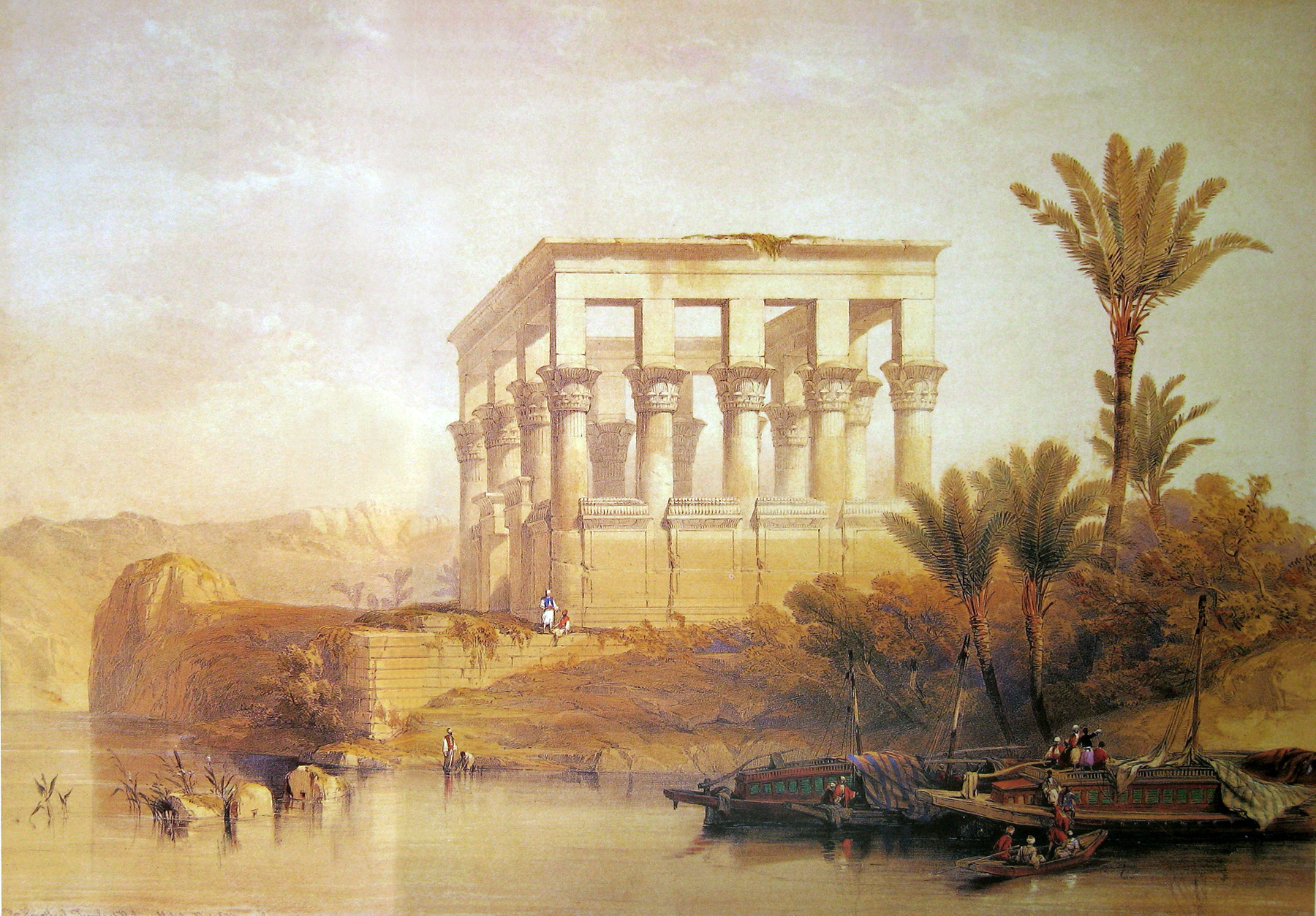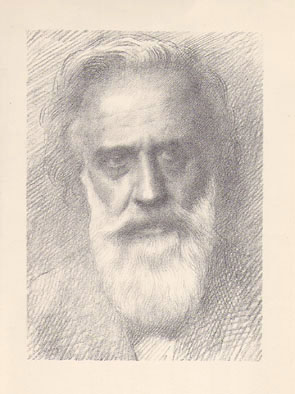|
Trevor Haddon
Arthur Trevor Haddon (22 August 1864 – 13 December 1941), also known as Trevor Haddon, was a British painter and illustrator. Life and career Arthur Trevor Haddon was born on 22 August 1864 in London. He won a scholarship to the prestigious Slade School of Fine Art and enrolled in 1883. There, he studied under Alphonse Legros. He also studied with Hubert von Herkomer from 1888 to 1890. Although he lived primarily in London and Cambridge, Haddon traveled to Rome, Madrid, Venice, California, South America, Hawaii, and Asia. He died in Cambridge on December 13, 1941, at age 77. Work Haddon was both a painter and illustrator.Selected paintings [...More Info...] [...Related Items...] OR: [Wikipedia] [Google] [Baidu] |
Slade School Of Fine Art
The UCL Slade School of Fine Art (informally The Slade) is the art school of University College London (UCL) and is based in London, England. It has been ranked as the UK's top art and design educational institution. The school is organised as a department of UCL's UCL Faculty of Arts and Humanities, Faculty of Arts and Humanities. History The school traces its roots back to 1868 when lawyer and philanthropist Felix Slade (1788–1868) bequeathed funds to establish three Chairs in Fine Art, to be based at Oxford University, Cambridge University and University College London, where six studentships were endowed. Distinguished past teachers include Henry Tonks, Wilson Steer, Randolph Schwabe, William Coldstream, Andrew Forge, Lucian Freud, Phyllida Barlow, John Hilliard (artist), John Hilliard, Bruce McLean, Alfred Gerrard. Edward Allington was Professor of Fine Art and Head of Graduate Sculpture until his death in 2017. Two of its most important periods were immediately befor ... [...More Info...] [...Related Items...] OR: [Wikipedia] [Google] [Baidu] |
Hubert Von Herkomer
Sir Hubert von Herkomer (born as Hubert Herkomer; 26 May 1849 – 31 March 1914) was a Bavarian-born British painter, pioneering film-director, and composer. Though a very successful portrait artist, especially of men, he is mainly remembered for his earlier works that took a realistic approach to the conditions of life of the poor. ''Hard Times'' (1885; Manchester Art Gallery) showing the distraught family of a travelling day-labourer at the side of a road, is one of his best-known works. Early life and education Herkomer was born on 26 May 1849 at Waal, in the Kingdom of Bavaria, the son of Lorenz Herkomer, a wood-carver of great ability, and his wife Josephine Niggl. His family was poor, and his mother tried to supplement his father’s earnings by giving music lessons. Once his mother gave him a half sovereign for some shopping: "It was the last piece of gold in the place. I lost it. My parents were in despair".''Chums'' annual, 1896, p. 279 Lorenz Herkomer left Bavaria i ... [...More Info...] [...Related Items...] OR: [Wikipedia] [Google] [Baidu] |
Orientalism
In art history, literature and cultural studies, Orientalism is the imitation or depiction of aspects in the Eastern world. These depictions are usually done by writers, designers, and artists from the Western world. In particular, Orientalist painting, depicting more specifically the Middle East, was one of the many specialisms of 19th-century academic art, and the literature of Western countries took a similar interest in Oriental themes. Since the publication of Edward Said's '' Orientalism'' in 1978, much academic discourse has begun to use the term "Orientalism" to refer to a general patronizing Western attitude towards Middle Eastern, Asian, and North African societies. In Said's analysis, the West essentializes these societies as static and undeveloped—thereby fabricating a view of Oriental culture that can be studied, depicted, and reproduced in the service of imperial power. Implicit in this fabrication, writes Said, is the idea that Western society is developed, ... [...More Info...] [...Related Items...] OR: [Wikipedia] [Google] [Baidu] |
Alphonse Legros
Alphonse Legros (8 May 1837 – 8 December 1911) was a French, later British, painter, etcher, sculptor, and medallist. He moved to London in 1863 and later took British citizenship. He was important as a teacher in the British etching revival. Life Legros was born in Dijon; his father was an accountant, and came from the neighbouring village of Véronnes. While young, Legros visited the farms of his relatives, and the peasants and landscapes of that part of France are the subjects of many of his works. He was sent to the art school at Dijon with a view to qualifying for a trade, and was apprenticed to Maître Nicolardo, house decorator and painter of images. In 1851, Legros left for Paris to take another situation; but passing through Lyon he worked for six months as journeyman wall-painter under the decorator Beuchot, who was painting the chapel of Cardinal Bonald in the cathedral. In Paris, Legros studied with Charles-Antoine Cambon, scene-painter and decorator of t ... [...More Info...] [...Related Items...] OR: [Wikipedia] [Google] [Baidu] |
Herman Finck
Herman Finck (November 4, 1872 – April 21, 1939) was a British composer and conductor of Dutch extraction. Born Hermann Van Der Vinck in London, he began his studies training at the Guildhall School of Music and Drama and established a career as the musical director at the Palace Theatre in London (from 1900 until 1920), with whose orchestra he made many virtuoso recordings. During these decades, he was also a principal conductor at the Queen's Theatre, at Theatre Royal, Drury Lane and at Southport. Finck was a prolific composer throughout the 1910s and 1920s. He composed around thirty theatre shows of most types - operettas (such as ''Decameron Nights''), ballets (like ''My Lady Dragon Fly''), incidental music, revues (annual revues ''Round the Map'' and ''The Passing Show'' were especially popular), plus songs, "mood music" for the silent cinema and many light orchestral pieces - suites such as ''Vive La Danse'' and ''Marie Antoinette'', marches such as ''Pageant March'' ... [...More Info...] [...Related Items...] OR: [Wikipedia] [Google] [Baidu] |
List Of Orientalist Artists
This is an incomplete list of artists who have produced works on Orientalist subjects, drawn from the Islamic world or other parts of Asia. Many artists listed on this page worked in many genres, and Orientalist subjects may not have formed a major part of their body of work. For example, the list includes some portrait painters based in Europe who on occasion painted sitters wearing "oriental" costume. The list also includes Orientalist photographers, engravers and lithographers. The list includes links to the English Wikipedia, and where no English article exists, named artists are linked to foreign language versions of Wikipedia, where available. Note: This listing uses Spanish naming customs, for personalities from cultural areas where they prevail : the first family name is the paternal name and the second is the maternal family name. Artists are listed alphabetically by their paternal family name. For example, the Spanish artist, Joaquín Sorolla y Bastida, is listed und ... [...More Info...] [...Related Items...] OR: [Wikipedia] [Google] [Baidu] |
1864 Births
Events January–March * January 13 – American songwriter Stephen Foster (" Oh! Susanna", " Old Folks at Home") dies aged 37 in New York City, leaving a scrap of paper reading "Dear friends and gentle hearts". His parlor song "Beautiful Dreamer" is published in March. * January 16 – Denmark rejects an Austrian-Prussian ultimatum to repeal the Danish Constitution, which says that Schleswig-Holstein is part of Denmark. * January 21 – New Zealand Wars: The Tauranga campaign begins. * February – John Wisden publishes ''Wisden Cricketers' Almanack, The Cricketer's Almanack for the year 1864'' in England; it will go on to become the major annual cricket reference publication. * February 1 – Danish-Prussian War (Second Schleswig War): 57,000 Austrian and Prussian troops cross the Eider River into Denmark. * February 15 – Heineken N.V., Heineken brewery founded in Netherlands. * February 17 – American Civil War: The tiny Confederate ... [...More Info...] [...Related Items...] OR: [Wikipedia] [Google] [Baidu] |
1941 Deaths
Events Below, the events of World War II have the "WWII" prefix. January * January– August – 10,072 men, women and children with mental and physical disabilities are asphyxiated with carbon monoxide in a gas chamber, at Hadamar Euthanasia Centre in Germany, in the first phase of mass killings under the Action T4 program here. * January 1 – Thailand's Prime Minister Plaek Phibunsongkhram decrees January 1 as the official start of the Thai solar calendar new year (thus the previous year that began April 1 had only 9 months). * January 3 – A decree (''Normalschrifterlass'') promulgated in Germany by Martin Bormann, on behalf of Adolf Hitler, requires replacement of blackletter typefaces by Antiqua. * January 4 – The short subject '' Elmer's Pet Rabbit'' is released, marking the second appearance of Bugs Bunny, and also the first to have his name on a title card. * January 5 – WWII: Battle of Bardia in Libya: Australian and Britis ... [...More Info...] [...Related Items...] OR: [Wikipedia] [Google] [Baidu] |
19th-century British Painters
The 19th (nineteenth) century began on 1 January 1801 ( MDCCCI), and ended on 31 December 1900 ( MCM). The 19th century was the ninth century of the 2nd millennium. The 19th century was characterized by vast social upheaval. Slavery was abolished in much of Europe and the Americas. The First Industrial Revolution, though it began in the late 18th century, expanding beyond its British homeland for the first time during this century, particularly remaking the economies and societies of the Low Countries, the Rhineland, Northern Italy, and the Northeastern United States. A few decades later, the Second Industrial Revolution led to ever more massive urbanization and much higher levels of productivity, profit, and prosperity, a pattern that continued into the 20th century. The Islamic gunpowder empires fell into decline and European imperialism brought much of South Asia, Southeast Asia, and almost all of Africa under colonial rule. It was also marked by the collapse of the l ... [...More Info...] [...Related Items...] OR: [Wikipedia] [Google] [Baidu] |
British Male Painters
British may refer to: Peoples, culture, and language * British people, nationals or natives of the United Kingdom, British Overseas Territories, and Crown Dependencies. ** Britishness, the British identity and common culture * British English, the English language as spoken and written in the United Kingdom or, more broadly, throughout the British Isles * Celtic Britons, an ancient ethno-linguistic group * Brittonic languages, a branch of the Insular Celtic language family (formerly called British) ** Common Brittonic, an ancient language Other uses *'' Brit(ish)'', a 2018 memoir by Afua Hirsch *People or things associated with: ** Great Britain, an island ** United Kingdom, a sovereign state ** Kingdom of Great Britain (1707–1800) ** United Kingdom of Great Britain and Ireland (1801–1922) See also * Terminology of the British Isles * Alternative names for the British * English (other) * Britannic (other) * British Isles * Brit (other) * ... [...More Info...] [...Related Items...] OR: [Wikipedia] [Google] [Baidu] |
Hawaii Artists
Hawaii ( ; haw, Hawaii or ) is a state in the Western United States, located in the Pacific Ocean about from the U.S. mainland. It is the only U.S. state outside North America, the only state that is an archipelago, and the only state geographically located within the tropics. Hawaii comprises nearly the entire Hawaiian archipelago, 137 volcanic islands spanning that are physiographically and ethnologically part of the Polynesian subregion of Oceania. The state's ocean coastline is consequently the fourth-longest in the U.S., at about . The eight main islands, from northwest to southeast, are Niihau, Kauai, Oahu, Molokai, Lānai, Kahoolawe, Maui, and Hawaii—the last of these, after which the state is named, is often called the "Big Island" or "Hawaii Island" to avoid confusion with the state or archipelago. The uninhabited Northwestern Hawaiian Islands make up most of the Papahānaumokuākea Marine National Monument, the United States' largest protected are ... [...More Info...] [...Related Items...] OR: [Wikipedia] [Google] [Baidu] |









